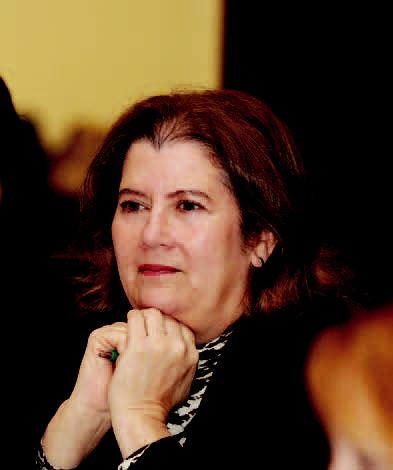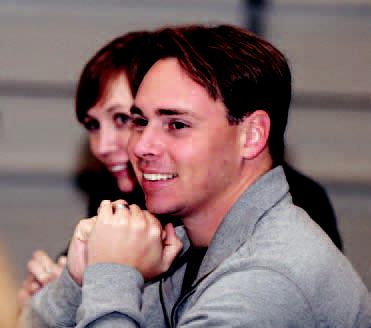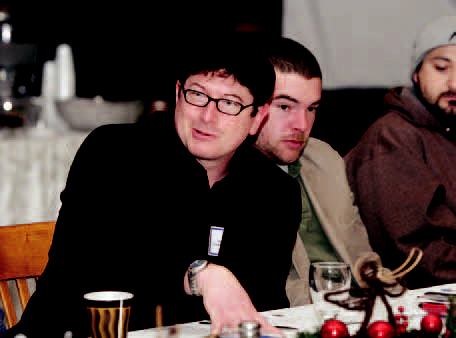Local film industry's growth surprising, even to insiders
by David Reed
December 23, 2010


There has been more film and video production activity in Columbia in the past three years than there was in the previous 30 years, Steiner said during a breakfast forum organized by the CBT at Spectrum Studios.
Small Pond’s production also included Pure Cinematica, the motion media arm of Brent Beshore’s expanding company, and Spectrum Studios. There was even a cameo appearance by NASCAR driver Carl Edwards as a bouncer at McNally’s Irish Pub.
A few additional highlights of Columbia filmmaking: A Horrible Way to Die, another locally made Sherman production, made it into the Toronto Film Festival; Submission, a martial arts film by Adam Boster, premiered this fall; and Zielinski, a feature-length documentary about a local character that was produced by Columbia Access Television’s Chase Thompson and Ryan Walker, made its world premiere at the Sundance Film Festival in Utah this weekend.
Although a state commission has recommended the General Assembly eliminate filmmaking tax credits next year, industry representatives at the forum said the incentive — $4.5 million in 2010 and $1.5 million previously — has had only marginal impact in Columbia.
Boster, owner of Boster Castle Studios, said he received $30,000 worth of tax credits recently for a short film with a $100,000 budget, which “kept three to six people working on a project over a 12-month period.”
But Boster pointed out that his multimedia company at Parkade Center, which has about 50 employees, spent $4 million making Submission. Most of the shooting took place over 10 days in Los Angeles and Las Vegas, though there were some clips from Columbia, he said, while they spent about 10 months editing at his studios.
When most people — including state legislators allocating tax credits — envision filmmaking, they see a set with multiple cameras, lights and actors and a director yelling “cut” at the end of a scene, Boster said. “People don’t understand development, preproduction and postproduction on both sides of the shooting.”
Steiner said, “If we have films doing postproduction work in Missouri, we can keep those highly skilled, high-paying jobs in our state.”
Small Pond, Steiner said, brought about $80,000 directly into Columbia’s economy. By comparison, Up in the Air, a feature film starring George Clooney that was shot in the St. Louis area, had a $12 million direct economic impact and was landed in large part because producers were able to get $4 million in state tax credits. The project last year employed an annual full-time equivalent of 226 people, according to the Missouri Department of Economic Development.
Boster and Steiner, who have organized a gathering of motion media advocates to lobby legislators on Feb. 2, said people need to understand that the motion media industry is verging on exponential growth because of widening applications for personal computers, smartphones, tablets such as the iPad, 3-D television, special effects and games.
“Missouri is missing the boat, big time missing the boat, in terms of what is happening with communications and how we receive media,” Steiner said. “What’s happening is a revolution in communications, and the skill sets that are used for a lot of those applications were birthed in our industry.”
Economic development initiatives should include incentives for these emerging segments of the motion media industry, she said.
Boster said that media “has exploded across the entire world. … The ability to make money in this area is ridiculous.”
Beshore said his “ballpark” estimate of local spending for filmmaking this year is between $3 million and $4 million, based on what he’s seen being done and not including the True/False and Citizen Jane film festivals.
Beshore said: “One of our competitive advantages is we have a highly trained, highly skilled workforce in the Columbia area. We can do things cheaper and better than our peers nationally, and that’s why we get work.”
“I’m more focused on: How can we build up the knowledge base in Columbia?” Beshore said. “Right now, a large production company can’t come into Columbia and be successful. We’re not deep enough. How do we build depth?”
Boster countered that he believes if the local industry pooled its resources, they could do several feature films at the same time. Several forum participants agreed with Boster’s assertion that much of the local motion media activity “has been flying below the radar. We have all the staff to make movies here.”
Chip Gubera, for example, is training some of the future motion media workers in his classes at MU’s computer science department. They design iPhone apps, he said, and produce “weird stuff” such as movies about masked Mexican wrestlers and, most recently, “roller derby girls who fight vampires.”
“They get jobs all over the place, but a lot of them want to stay here,” he said.
Beth Pike, a Columbia-based director and producer of commercial and documentary videos, said until she attended the forum, she didn’t realize the depth of resources available locally.
“I feel a little guilty that I’ve brought in crews from Kansas City to work on some productions,” she said.
In a subsequent e-mail, she wrote, “I am realizing there’s a budding video and film production happening right here with many talented people, and I certainly want to build relations with local crew who can handle the job. Building a base within will only strengthen production for our area and, hopefully, bring larger productions to Columbia.”
Kerri Yost, chair of the Digital Film and Media Department at Stephens College and co-director of the Citizen Jane Film Festival, said her students are spoiled by the quantity of filmmaking and quality of the film festivals.
“I have to tell my students, ‘It’s not like this elsewhere,’” she said.





What's Your Reaction?
Excited
0
Happy
1
Love
0
Not Sure
0
Silly
0


